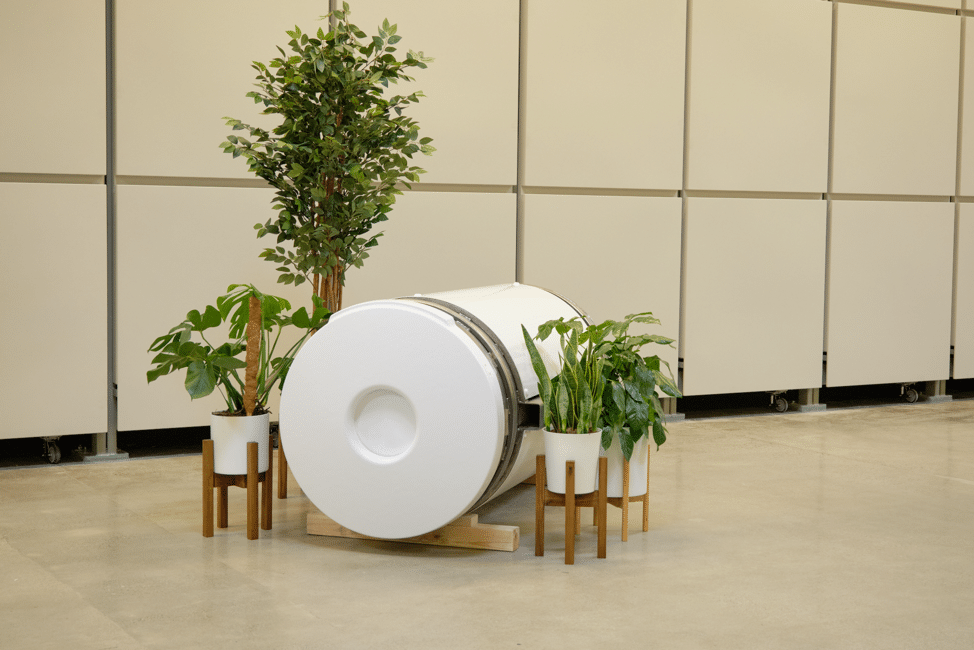Mar 15, 2023
ASD is pleased to share this guest blog post written by Tom Harries, Co-Founder and CEO of Earth. Please note the views and opinions expressed in this guest blog post are those of the author and do not necessarily reflect the official position of our company. ASD does not endorse or make any representations about the accuracy, reliability, suitability or completeness of any information or statements expressed in this guest blog post.

5 Things Most Funeral Directors Don’t Know About Natural Organic Reduction
Natural organic reduction, also known as human composting or soil transformation, has been rapidly gaining popularity as a disposition method over the past few years. In the past six months alone, both California and New York have passed human composting legislation that will bring the process to their residents in the near future. This is part of a growing movement – according to NFDA research conducted in 2022, more than 60% of people are interested in exploring green funeral options.
Despite growing popularity and understanding, natural organic reduction is still quite a new process to many people, including funeral directors. Certainly, some of the details of the process and the soil it produces are not well known. We’ve pulled together this list to enlighten you about some of the lesser known human composting facts, based on some of the questions we hear most frequently.
The process is net carbon neutral
The natural organic reduction process does not create any CO2 beyond the natural carbon cycle – it is net carbon neutral. Earth’s soil transformation process uses renewable electric energy sources.
Cremation is, by contrast, a pollutive process. Requiring the digging up and burning of fossil fuels, each cremation process creates man-made CO2 well beyond the levels produced by the natural carbon cycle. On average, each cremation produces 535lbs of CO2 – equivalent to a 609 mile car journey in an average sized car.
Natural organic reduction is therefore an appealing option for those concerned about their environmental impact. With many people going to great lengths to make their actions during life as sustainable as possible, it can be reassuring for them to know that their last act on earth can be carbon neutral.
The process takes only 30-45 days
While many people imagine it would take longer, the natural organic reduction process in fact only takes 30-45 days. The process creates the ideal conditions for naturally occurring microbes and beneficial bacteria, accelerating the traditional composting process that most people are familiar with.
By the end of this period, the body has been gently transformed into approximately one cubic yard of healthy, nutrient-rich soil.
The soil can be used by families or donated to conservation projects
The cubic yard of soil produced by the human composting process is enough for families to use a portion for memorialization and for the remainder to be used for conservation.
At the end of Earth’s process families choose how much soil they would like returned. This soil can be used in a variety of ways, with many choosing to scatter it in a meaningful place or to nourish a plant or memorial flowers.

The portion of soil that is not returned can be donated to Earth’s conservation land, where it is used for a variety of restoration projects. Families can do this in the knowledge that the soil is perfect for this purpose, and that it will be used on a dedicated project that maximizes the soil’s conservation potential.
Healthy soil is very important for land conservation and soil donation can therefore have a big impact, as well as provide for a beautiful resting place.
The soil can be scattered in national parks and the Pacific Ocean
While laws do vary by state, the rules around where soil can be scattered look broadly similar. In Washington, home to our first location, as long as any necessary permissions are received, the soil can be scattered in national parks and state trust uplands, as well as the Pacific Ocean below the mean lower low water mark.
This allows for a huge number of places across the state, allowing families and friends to choose somewhere special and meaningful.
The process is high-tech and takes place in specialist facilities
Some people think, perhaps because of the term ‘human composting’, that the process will be very rudimentary. In fact, soil transformation is performed in purpose-built facilities that are modern and high-tech. At Earth, we have state-of-the-art facilities that provide a peaceful and serene environment in which the process takes place.

Our soil transformation process involves placing the body in a purpose-built vessel, which recreates the conditions found in the natural world. The vessel does this by carefully balancing carbon, nitrogen, oxygen and water, and optimizing temperature and moisture levels.
Author bio:
Tom Harries is Co-Founder and CEO of Earth. He has spent almost a decade innovating in the funeral industry. Tom is committed to the idea that deathcare can and should be regenerative, and a means to protect the planet for future generations.
Links:
- https://earthfuneral.com/resources/tracker-where-h…
- https://nfda.org/news/statistics
- https://earthfuneral.com/what-is-soil-transformati…
- https://app.leg.wa.gov/wac/default.aspx?cite=308-4…
- https://earthfuneral.com/
About The Author
Jess Farren (Fowler)
Jess Farren (Fowler) is a Public Relations Specialist and Staff Writer who has been a part of the ASD team since 2003. Jess manages ASD’s company blog and has been published in several funeral trade magazines. She has written articles on a variety of subjects including communication, business planning, technology, marketing and funeral trends. You can contact Jess directly at Jess@myASD.com



